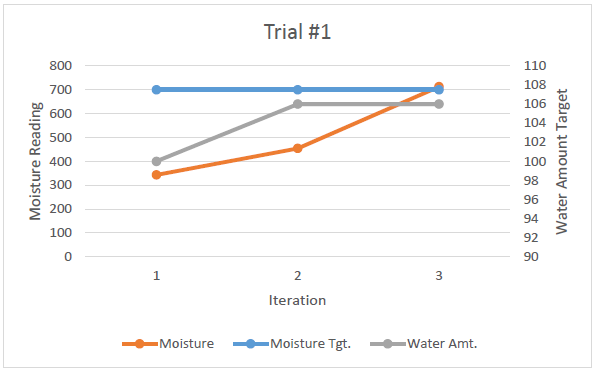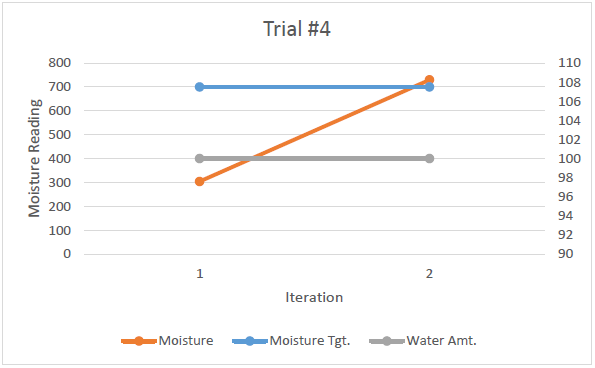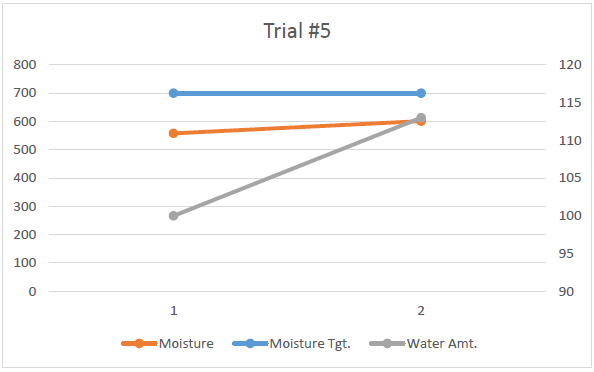Water Optimization
One of the goals of our design was to optimize the amount of water dispensed, based upon data collected during prior applications. To test this functionality we increased our RTCC interrupt frequency, so that we could condense the watering sequence into a matter of minutes, instead of hours. In order to simulate a variety of watering scenarios, potted plants were used with varying moisture levels moving the sensor prior to and after application of water, recording the adjusted target dispense amount. Below are the results of five trials we ran:
In each instance, it can be seen how the system increases water when moisture is measured below threshold, while decreasing subsequent outputs when over the threshold.
Trending Temperature Location
Temperature location was verified in two ways, through short-term simulation (as in the water optimization), as well as real-time tests performed outdoors. The short-term tests were accomplish through manipulation of the temperature sensor, holding it between our fingers. In this way we were able to increase the temperature enough to read at least three subsequent decreasing temperatures as the sensor returned to ambient air temperature. Two real-time tests confirmed operation of our algorithm, as shown below:

Location: Easton, PA Date: 12/7/16 Source: https://www.wunderground.com/history/airport/KABE/2016/12/7/DailyHistory.html
This temperature data was taken after the trial was completed, with the hourly temperature used to determine the accuracy of our sensor. During this trial we did not reduce the minimum temperature threshold below 7 C, so the sensor did not trigger (as expected).

Location: Easton, PA Date: 12/8 Source: https://www.wunderground.com/history/airport/KABE/2016/12/8/DailyHistory.html
During the second trial, the minimum threshold was lowered to 0 C, with green area indicating the six hours of data that led to a triggered optimal time location. This followed expectations, and operated correctly.
Safety Considerations
The main aspect of our current design which presented a possible hazard was the solenoid valve. In the event our software got stuck, we implemented a fail-safe which would automatically close the valve after one hour of remaining open. An open valve was dangerous in two ways; since the solenoid required a large amount of current it would begin to heat up if no water was flowing through it, and secondly possible flooding could occur if water was inadvertently dispensed for too long. This operated by means of a timer that would begin whenever the valve was toggled open.





